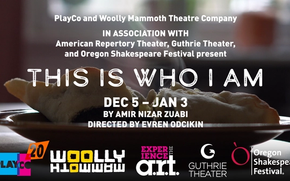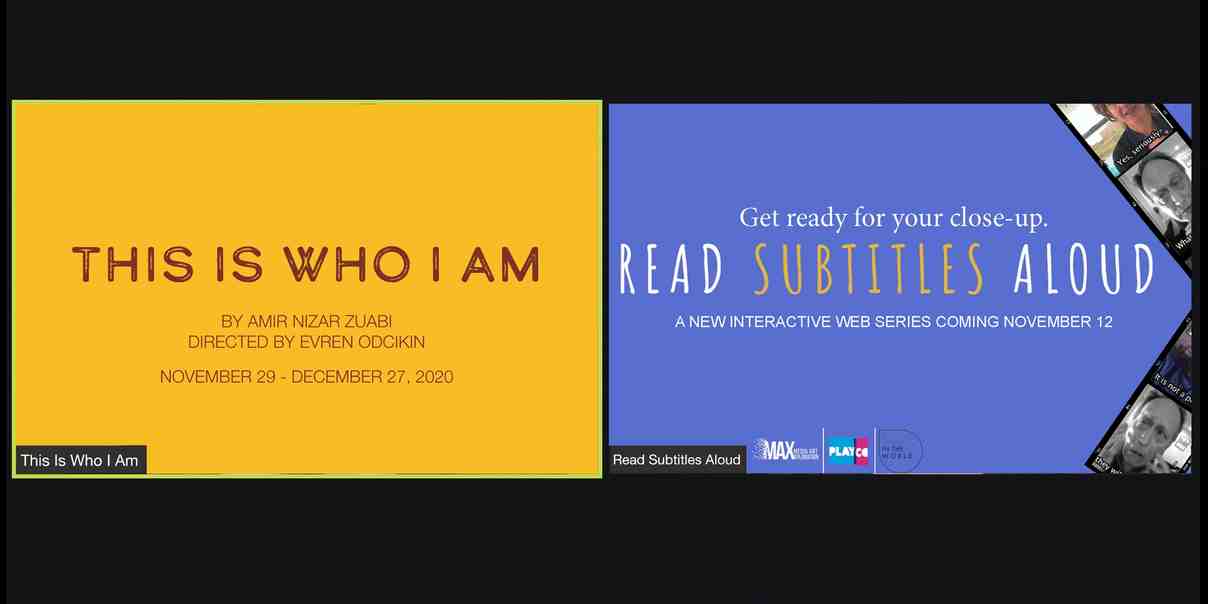

PlayCo Joins the Digital Stage!
Meet the Participants

Charlene Adhiambo (she/her/hers) is a Kenyan American writer currently based in her hometown of Atlanta. Her one-act play Guardian was read at Saudade Theatre’s Re-Descobrimentos Festival in July 2020. Her creative work spans many mediums including (but not limited to), screenplay, stage play, fiction, essay, poetry, and song. While the containers and even genres of her work change, constant themes are mother- and daughterhood, black girl- and womanhood, friendship, romance, and grief. She writes in a space somewhere between Ray Bradbury and Toni Morrison, two of her favorite authors. When not writing, she is listening to R&B music, teaching herself guitar, or doing yoga. She received her B.A. in Creative Writing and English Literature from Columbia University.
It’s a big year for PlayCo. We are in our twentieth season, and it will be memorable not only as we reflect on our legacy but look to our future. Though this is a moment in which we, like the entire world, must adapt, we have a history of breaking form with our in-person performances like Caught, Generations, and Oh My Sweet Land. Thus, in this unprecedented time, we have precedent, which makes the constraints of social distancing more an opportunity than a hindrance. Our twentieth season begins with two exciting programs: a co-production of This is Who I Am by Amir Nizar Zuabi with Woolly Mammoth Theater and other partners, as well as a partnership with Media Art Xploration (MAX) for their web series, Read Subtitles Aloud. Both projects elevate and expand their digital formats.
This is Who I Am follows a father and son reconnecting on a Zoom call, bridged by a favorite recipe that the mother, who has passed on, used. It is a play about distance, isolation, and masculinity, and how we negotiate them. It is about love, and how it negotiates us. It is also aptly about grief, which in a pandemic is amplified by not only the frequent death and sickness, but the inability to grieve alongside loved ones. The brilliance of this plays lies not only on its lyricism and heart, but that it is working with, not in spite of, its format. PlayCo and Woolly Mammoth specifically commissioned the play for Zoom, and for that reason, it understands and wants to make the most of Zoom box-as-stage.
Similarly, Read Subtitles Aloud produced by MAX, attempts to stretch the boundaries of the computer screen. It is an interactive web series, in which the viewer is the star. In each episode, the actors address you, X, a screenwriter. Your lines play across the screen, and the actors in the recorded episode react to your words, as if you were there, as if they can actually see you. It feels magical, intimate. You can choose to just watch, making it more so like you’re watching an audition tape, or you can participate, which feels awkward and cumbersome at first, but immediately becomes playful and exciting. Sometimes, X is kissed, other times, cursed at. It can feel as if you are in a skin suit, as if you’ve woken up a new person and are now subject to their life, a la Being John Malkovich.
What I love about this, is that even if you decide only to watch, the experience is stimulating and the furthest thing from passive. It subverts the whole notion that Zoom theatre, if you can even call it theatre, is always clunky, dull, and can never live up to the “real thing”. Of course it couldn’t. The stage and a Zoom screen are different media. The same way we do not ask film to mimic theatre, and vice versa, I think we should not ask Zoom theatre to be a replacement or even holdover for the stage. Why not experiment with its form? Why not make it its own form of art? These past few months, I have seen various forms of online productions and readings from theatre companies, and I swear that each month, they get a little more creative, a little more innovative. It makes me hope that theatres will continue virtual programming even once stages are open. Don’t get me wrong, I am Zoomed out, and I can’t wait to return to the stage, but virtual theatre has grown on me.
For one, there’s a level of accessibility that traditional theatres do not often offer. Often virtual theatre is free, or, if you do pay, it’s often sliding scale/donation-based. You’re in the comfort of your own home, so you can eat and drink, unlike in actual theatres. You can be in bed, or on your couch. And I have seen so many festivals, normally exorbitantly expensive or in person, be open for wider audiences. So many are now accessible to students, pedagogues, and anyone who would like to see.
Of course, it’s not as if all barriers are erased by virtual theatre. Not everyone has access to reliable WiFi, or WiFi at all. Then, technical difficulties abound with Zoom, whether it’s someone who forgets to turn their mic off, issues with connection, or audience members having trouble finding a certain function on the application. In addition, I’ve found that the shorter a program, the better. But that’s because I’m someone who barely has the stamina to watch a film over an hour and thirty minutes. So, perhaps it is a matter of personal taste. Lengthiness notwithstanding, intermission is always a solution.
Theatre is one of the oldest art forms in the world, perhaps this moment is not a glitch but an opportunity for growth and change. Theatre’s ability to pivot demonstrates the form and the industry’s flexibility, which inspires confidence in me as the past seven months have transformed our world irreparably. Let’s continue to face this moment, grieve what we have lost, and also honor and celebrate what has arisen by applauding our resilience as artists and as human beings.
Related Productions


Author
Charlene Adhiambo